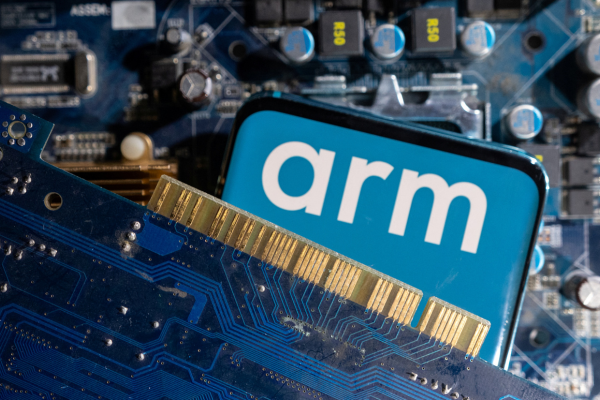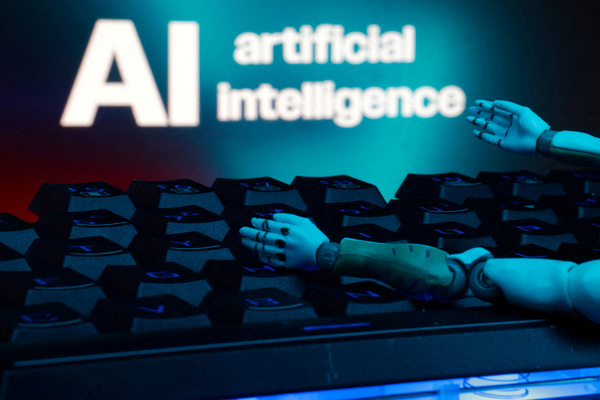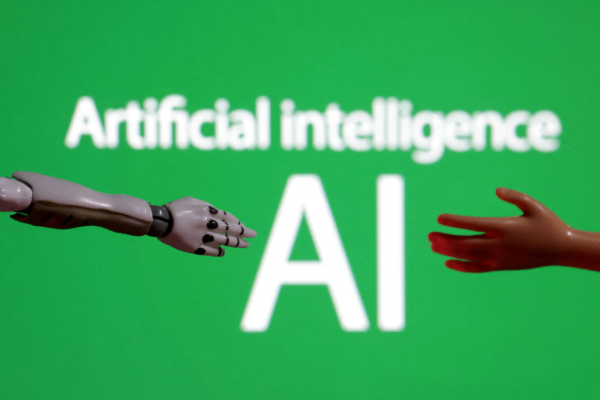Developers are shaping the future of GenAI

Philip Rathle at Neo4j explores how developers are using RAG and GraphRAG to tackle GenAI deployment challenges and shares strategic actions to encourage better governance and alignment
GenAI is the new innovation frontier. Seven million people in the UK use it for work, with three in four claiming a significant productivity boost. Yet what’s different from previous eras of technological innovation is the pivotal role of developers in shaping its future. In past waves, developers were hidden behind the scenes, turning the ideas of others into reality. With GenAI, developers have become the driving force.
CIOs who embrace this dynamic will be better equipped to transform their own organisations. Here’s why and how.
Developers and the future of GenAI
While many innovations are vision-driven, bottom-up innovation can also lead to significant advancements, often driven by the collaborative spirit and diverse input of a community rather than a singular, centralised vision. Linus Torvalds created the Linux kernel in 1991, but its growth into a massive open-source operating system was driven by a decentralised group of developers.
Inside companies, it’s those developers who find new and creative ways of solving business problems, driving innovation that fuels advancements and enables organisations to adapt and thrive in the evolving tech landscape. Google famously introduced a “20% time” programme for developers to work on anything they wanted, leading to products, like Gmail, Google News, and AdSense.
GenAI is a particularly rich field for developers, so we should empower them to explore and discover the possibilities that surround it. While GenAI has quickly been taking over the consumer world with products like ChatGPT and Midjourney, enterprises have been more cautious due to higher stakes.
It’s through investment in AI literacy and allowing for safe exploration by developers, that they can help organisations understand GenAI’s possibilities, and to mitigate pitfalls while being supported by clear policies and practices.
GraphRAG and open source
Developer-led exploration and innovation depend on two ingredients: an opportunity, and new technologies or patterns applied in a different way to solve the problem at hand.
Let’s examine this pattern by way of GraphRAG, which amounted from a search to solve a problem: that GenAI applications were hallucinating, operating as a black box, and had no awareness of what an end user is allowed to see or what is sensitive or private data. While vector-based RAG offered some help, it wasn’t sufficient for many use cases. In mid-2023, developers independently conceived the idea of integrating knowledge graphs into GenAI pipelines, leading to GraphRAG.
GraphRAG enhances GenAI by combining vector similarity search with knowledge graphs, which are structured representations of entities and their relationships. This integration complements text-based vector approaches with authoritative knowledge and context, resulting in more accurate, contextually rich, explainable, and transparent outcomes. Gartner reports on GraphRAG have highlighted it as essential for improving GenAI accuracy, leading to higher adoption.
A new AI engineering phenomenon
This goes to show that the role of the developer has been morphing. Software developers are now becoming AI engineers, integrating AI into modern applications. They’re innovating architectures to work around limitations, creating new capabilities and enhancing experiences. The variety of models and new frameworks helps manage complexity, accelerate innovation, and make application building as much about assembly as coding.
As AI becomes essential to modern applications, developers are integrating LLMs and creating innovative architectures, like GraphRAG and agentic frameworks, to overcome their limitations. This evolution enhances employee and customer experiences, with a wide choice of models, from foundation models accessed via APIs to specialised open-source versions, encouraging innovation across the tech stack.
New frameworks, like LangChain and LlamaIndex for development, or Unify.ai for model routing, also simplify the process. While the vast options might seem overwhelming, they actually ease the workload, making AI integration more accessible and transforming application development into a modular, GenAI-assisted process.
These trends signal GenAI’s technical viability and value within organisations. The question isn’t how intelligent large language models will become; it’s what developers will do with the evolving toolkit.
Key steps to boost AI innovation
Give the freedom to experiment. Give developers the freedom to experiment, even if it’s an hour of their workday. Innovation happens with experimentation. One example of something that quickly came to fruition is the free and open source Knowledge Graph LLM Builder, which brings together a variety of open components that help anyone get into the basics of GraphRAG in minutes.
Provide frameworks that remove creativity barriers and facilitate safe, responsible experimentation. Build clear policies, access to the latest tech and tools, and ensure data privacy and security.
Empower developers. Empower developers to reach GenAI goals, objectives, and competencies. Building a GenAI application is one thing; ensuring its accuracy, transparency, and explainability is another. CIOs need to architect and scale with these goals in mind. Align with developers on the best tools vital for GenAI adoption.
EY suggests that leaders should also consider prioritising small strategic initiatives that link separate or independent teams in ways that allow multiple uncertainties or constraints to be addressed simultaneously, and validate decisions with developers’ input.
Think holistically. Think about the developer experience, not just their productivity. Developers do more than write code; they design, diagnose, debug, and fix. Unlike automation tools, they make software do what humans need. CIOs can prioritise efficiencies with GenAI and build innovations that impact the top line. Bottom-line efficiencies are important, but the ultimate winners will be using top-line innovations to win with GenAI.
The GenAI business revolution
Developers are at the forefront of the GenAI business revolution, serving as primary creators and key collaborators. Their expertise is essential to ensuring AI is implemented responsibly, safely, and ethically.
CIOs who recognise the value of developers as strategic partners will be best positioned to make the most of the technology’s transformative impact.
Philip Rathle is CTO at Neo4j
Main image courtesy of iStockPhoto.com and gorodenkoff

Business Reporter Team
Most Viewed
Winston House, 3rd Floor, Units 306-309, 2-4 Dollis Park, London, N3 1HF
23-29 Hendon Lane, London, N3 1RT
020 8349 4363
© 2025, Lyonsdown Limited. Business Reporter® is a registered trademark of Lyonsdown Ltd. VAT registration number: 830519543





